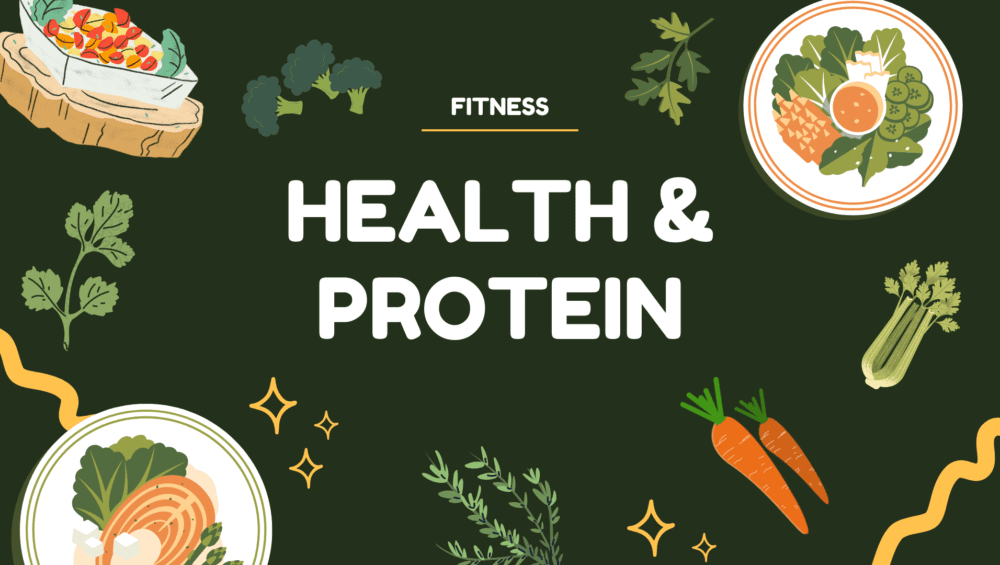Free Standard shipping
Free Standard shipping

Proteins are macronutrients that are required in relatively large quantities to perform various physiological functions and also provide energy to the body. Proteins are further made up of components called amino acids.
When we eat protein, the digestive enzymes in the stomach and intestines break down the bonds between amino acids, and the individual components (amino acids) are absorbed in the intestines by the body and transported around the body, where they become structural parts of our body.
Below are some examples that explain the functions of proteins:
In a simple analogy, proteins are like bricks needed to build and repair structures in the body, such as muscles, organs, and enzymes. Our body comprises at least 10,000 different proteins, which collectively define our physical makeup and sustain our overall well-being.
It is important to note that while protein is a macronutrient, our bodies also require vitamins and minerals to make protein. For example, along with proline and glycine, we also need the micronutrients vitamin C and zinc for collagen production.
We are aware that proteins are made up of amino acids. The human body needs 20 types of amino acids (20 are standard, and the other one, selenocysteine, is a very rare amino acid) to function properly. These amino acids are further classified as essential (EAA or IAA), non-essential amino acids, and conditionally essential amino acids.
Essential amino acids (EAA): These are not synthesized by the human body and must be obtained through diet. There are nine essential amino acids, which include histidine, isoleucine, leucine, lysine, methionine, phenylalanine, threonine, tryptophan, and valine.
The table below mentions the functions relevant to individual essential amino acids in humans, which helps us understand the importance of proteins (essential amino acids).
| Name of EAA | Functions in body |
|---|---|
| Histidine | Important for growth and the repair of tissues, histidine is a precursor to histamine, a neurotransmitter involved in immune response, digestion, and sleep-wake cycles. Isoleucine Crucial for muscle metabolism |
| Isoleucine | helps in hemoglobin formation and the regulation of blood sugar and energy levels. It also plays a role in immune function. |
| Leucine | Essential for protein synthesis and muscle repair, leucine helps regulate blood sugar levels, stimulates wound healing, and produces growth hormones. |
| Lysine | Necessary for protein synthesis, lysine aids in calcium absorption, supports immune function, and is involved in the production of hormones, enzymes, and antibodies. |
| Methionine | Important for metabolism and detoxification, methionine is a precursor to cysteine and taurine, amino acids that help with liver function, muscle growth, and the absorption of zinc and selenium. |
| Phenylalanine | A precursor for neurotransmitters like dopamine, norepinephrine, and epinephrine, phenylalanine plays a critical role in brain function and mood regulation. |
| Threonine | Involved in the formation of collagen and elastin, threonine is crucial for skin and connective tissue health. It also plays a role in fat metabolism and immune function. |
| Tryptophan | a precursor to serotonin and melatonin, is important for mood regulation, sleep, and overall mental health. However, more data is needed to understand its importance in improving sleep. It also contributes to niacin (vitamin B3) production. |
| Valine | Important for muscle growth and tissue repair, valine also helps regulate blood sugar levels and provides energy to the body during physical activity. |
Non-essential amino acids (EAA): Non-essential amino acids are those that the body can synthesize on its own, do not need to be obtained directly from the diet, and are produced by the body through various metabolic processes. There are 11 non-essential amino acids, which include alanine, arginine, asparagine, aspartic acid, cysteine, glutamic acid, glutamine, glycine, proline, serine, and tyrosine.
Conditionally essential amino acids: conditionally essential amino acids are non-essential amino acids but need to be supplemented more in times of illness and stress, either by foods or by supplements. These include arginine, cysteine, glutamine, tyrosine, glycine, proline, and serine.
Sometimes we hear that a particular food has complete protein, meaning that food contains all the 20 amino acids needed to make a new protein in the body. Animal-based foods (meat, poultry, fish, eggs, and dairy foods) tend to be good sources of complete protein.
Contrarily (with some exceptions of quinoa, chia, and soya), the majority of plant-based foods (fruits, vegetables, grains, nuts, and seeds) often lack one or more essential amino acids. Hence, vegetarians should eat a variety of protein-containing plant foods (especially pulses) each day in order to get all the amino acids needed to make new protein.
The bottom line is that when you eat protein foods containing all amino acids or combine various food items to get all the amino acids, your body will be able to make the proteins needed for the proper functioning of the human body. Otherwise, protein synthesis will be limited by the deficient amino acids, which might become a problem.
To be continued…
No account yet?
Create an Account